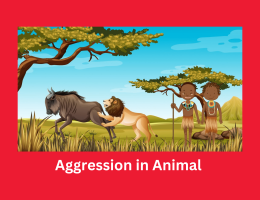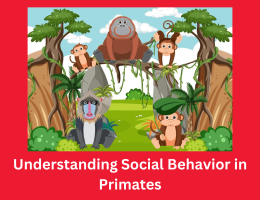
Understanding Social Behavior in Primates: Insights into Hierarchies, Communication, and Cooperation
- By admin --
- Tuesday, 12 Mar, 2024
Primates, our closest biological relatives, exhibit complex social behaviors that have fascinated researchers for decades. Among these behaviors, social hierarchies, communication, and cooperation stand out as fundamental aspects shaping their interactions and group dynamics. By examining the behaviors of primates such as chimpanzees, bonobos, and gorillas, we gain valuable insights into the evolutionary roots of human sociality.
Social hierarchies play a crucial role in primate societies, influencing access to resources, mating opportunities, and overall group stability. Chimpanzees, for example, exhibit a dominance hierarchy characterized by aggressive interactions and power struggles among males. Through displays of physical strength, vocalizations, and alliances, individuals establish and maintain their positions within the hierarchy. Higher-ranking individuals enjoy priority access to food and mates, while lower-ranking individuals must often defer and submit to avoid conflicts.
In contrast, bonobos, often referred to as the "hippies of the primate world," demonstrate a more egalitarian social structure. While dominance exists, it is less rigid, and conflicts are typically resolved through affiliative behaviors such as grooming, sexual interactions, and food sharing. Bonobos prioritize social bonding and cooperation, which contribute to lower levels of aggression compared to chimpanzees. Their social system highlights the flexibility of primate societies and the diverse strategies employed to navigate social relationships.
Gorillas, on the other hand, exhibit a distinct social hierarchy centered around a dominant silverback male, multiple females, and their offspring. The silverback holds authority over the group, responsible for protection, decision-making, and resolving conflicts. Female gorillas maintain strong bonds with the silverback, and their social status within the group is often determined by their relationship with him. While conflicts may arise, gorillas rely on displays of power and vocalizations rather than physical aggression to maintain social order.
Another essential element of primate social behavior is communication, which promotes collaboration, resolving conflicts, and mate choice. Primates communicate and sustain social ties using a range of vocalizations, gestures, facial expressions, and body postures. For example, chimpanzees have a sophisticated vocal repertoire that they use to coordinate activities like hunting and territorial defense and to communicate with other members of their group. These vocalizations include hoots, screams, and pant hoots.
Bonobos often use voice, gestures, body contacts such as kissing, embrace, and touch between genitals among themselves in order to increase social bonds and to decrease tension among the group members. These activities show that communication plays a significant role in maintaining peace and solidarity among bonobo communities.
When gorillas get angry, when they feel that they cannot succeed in a fight (submission), or when they want to show their dominance towards other gorillas they will beat the ground with an open hand (stomp), beat their own chests with both hands and/or fists which produces a loud noise heard for kilometers away. By doing this they are able to communicate better with other members of their species hence maintain peace and order among themselves.
Cooperations are what characterize primate communities, allowing members to achieve mutual goals like getting food, protecting their territory or taking care of offspring. The chimpanzees cooperate so remarkably that they form coalitions in order to protect themselves from outside threats, move up in social status and gain control over resources. Cooperative hunting, in which participants work together to catch and distribute game, demonstrates their capacity for action coordination and profit sharing within the group.
Additionally, bonobos exhibit cooperative conduct, specifically whilst consuming and grooming in corporations. Grooming now not best aids with hygiene but additionally fosters advanced social interactions and reduces struggle inside the institution. Bonobos demonstrate a high degree of tolerance and reciprocity, fostering a cooperative atmosphere essential for group cohesion.
In family groups, gorillas mostly cooperate wherein females establish close relationships with each other for childcare support and defense against predators from outside. A silverback is crucial in maintaining peace within and between families, giving protection to the group altogether. Collaborative defense against competing groups and predators is a key factor for gorilla population survival, hence, showing the importance that collaboration plays in the conservation of gorillas.
In conclusion, Investigating monkeys' social behavior offers vital facts approximately the evolutionary roots of human sociality. By analyzing apes inclusive of gorillas, chimpanzees, and bonobos, researchers are capable of better recognize the in-depth dynamics that shape the composition of primate groups, together with their social hierarchies, conversation patterns, and cooperative behaviors. These findings do clarify essential human social evolution and conduct sides and open up a window of comprehension on monkey conduct.





